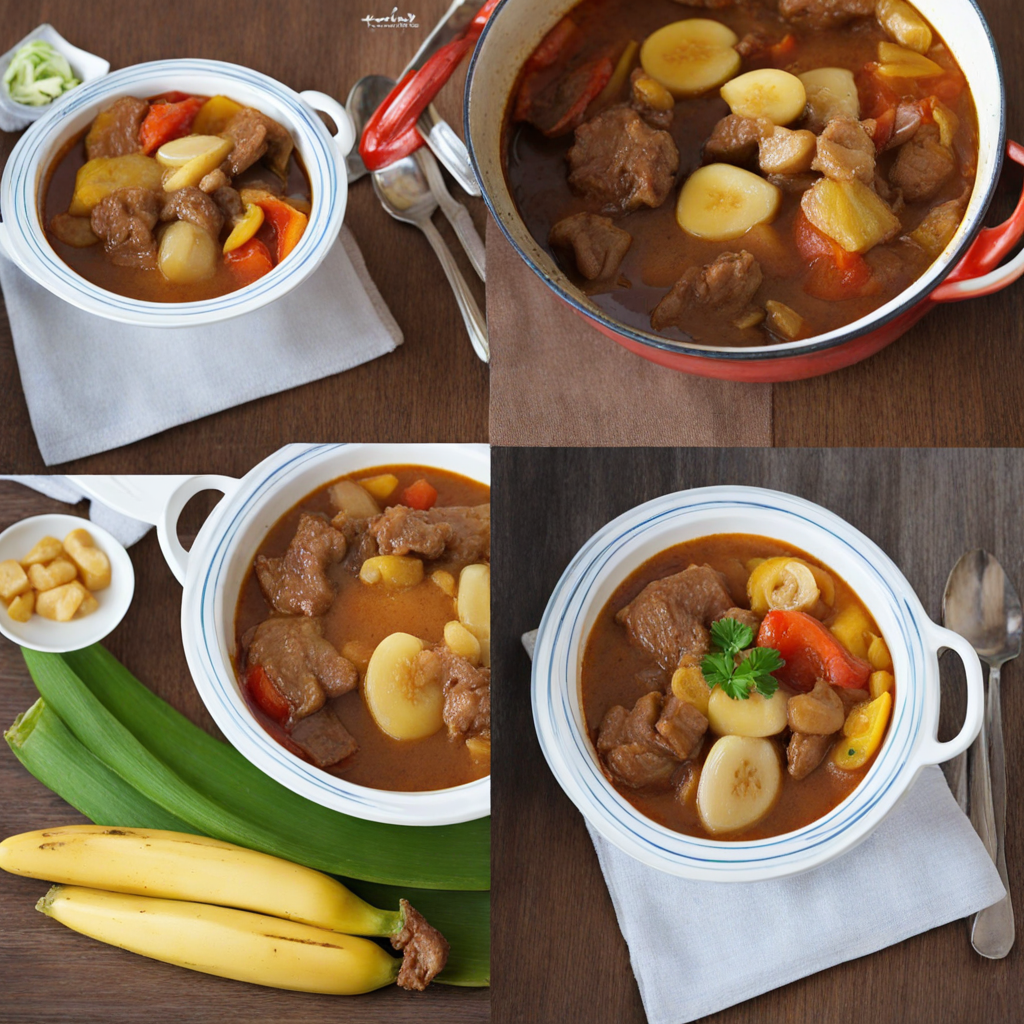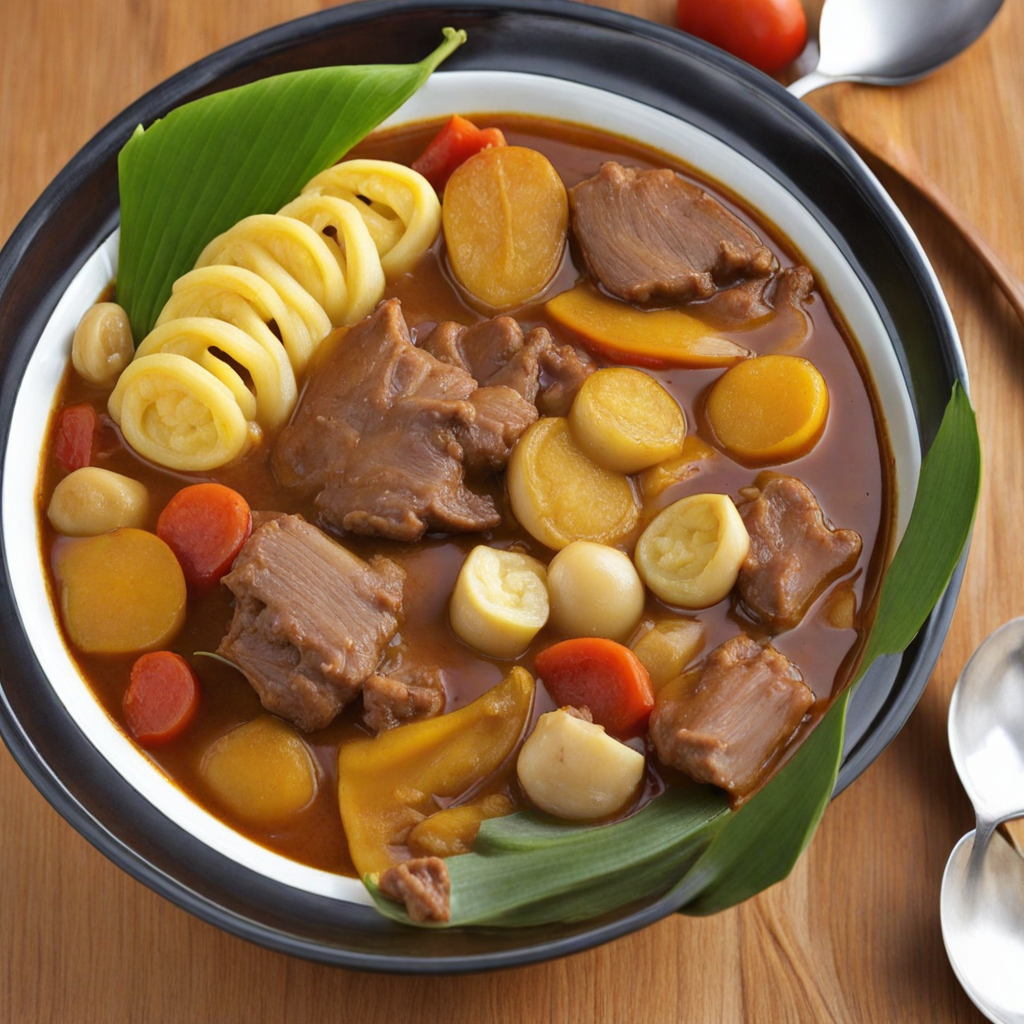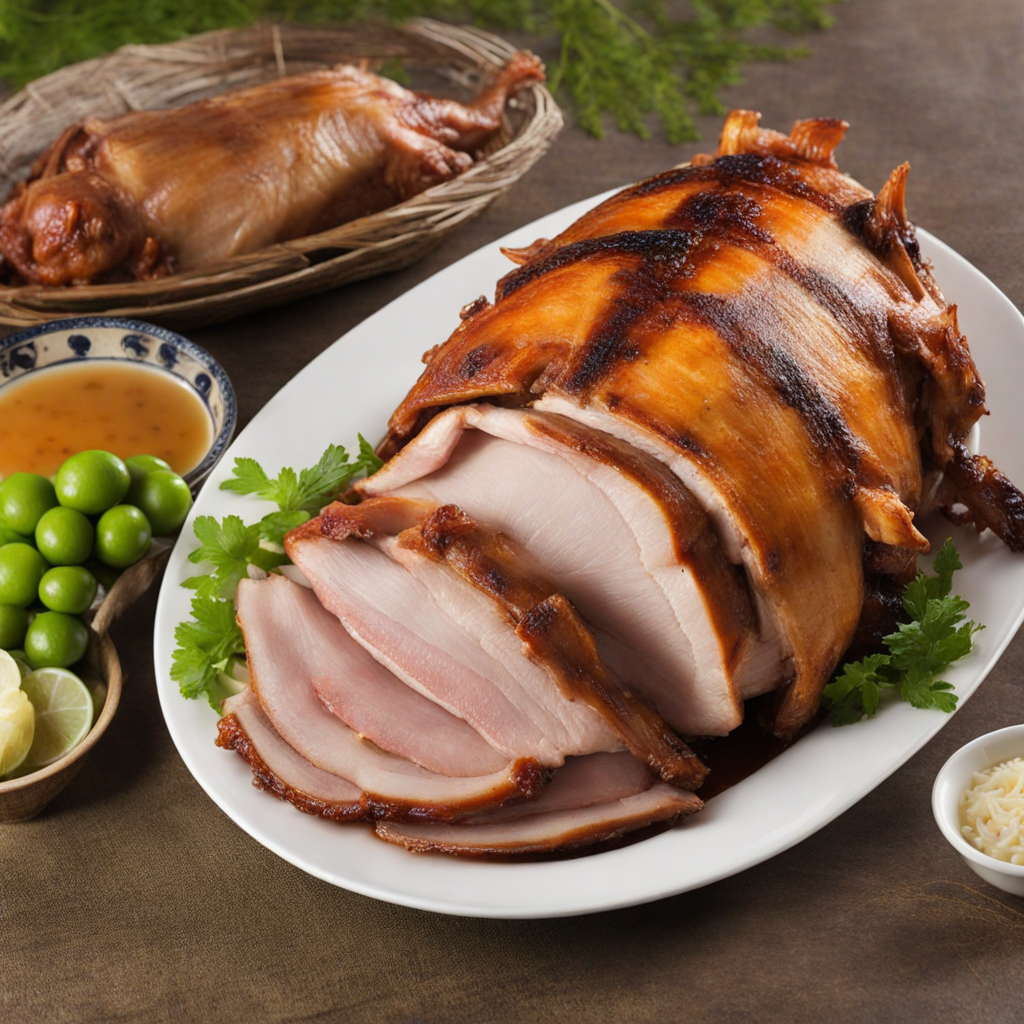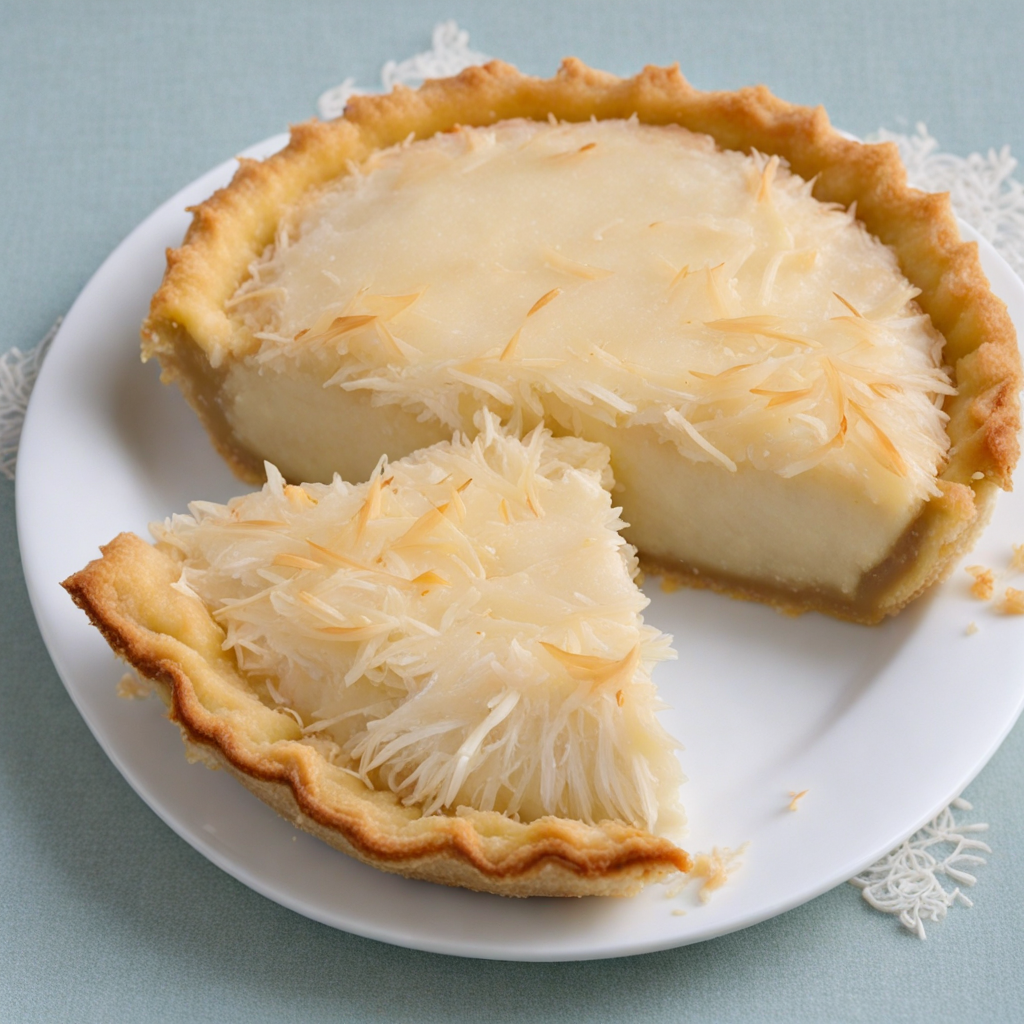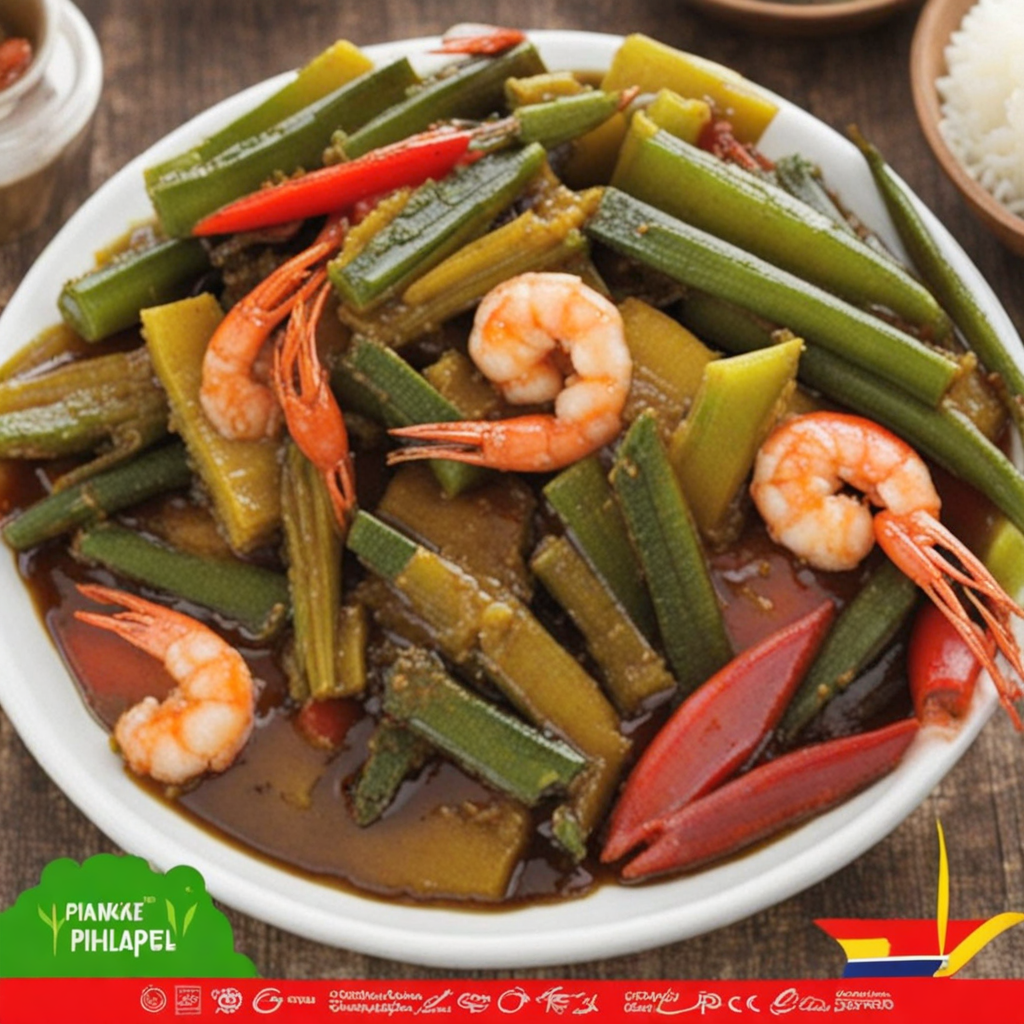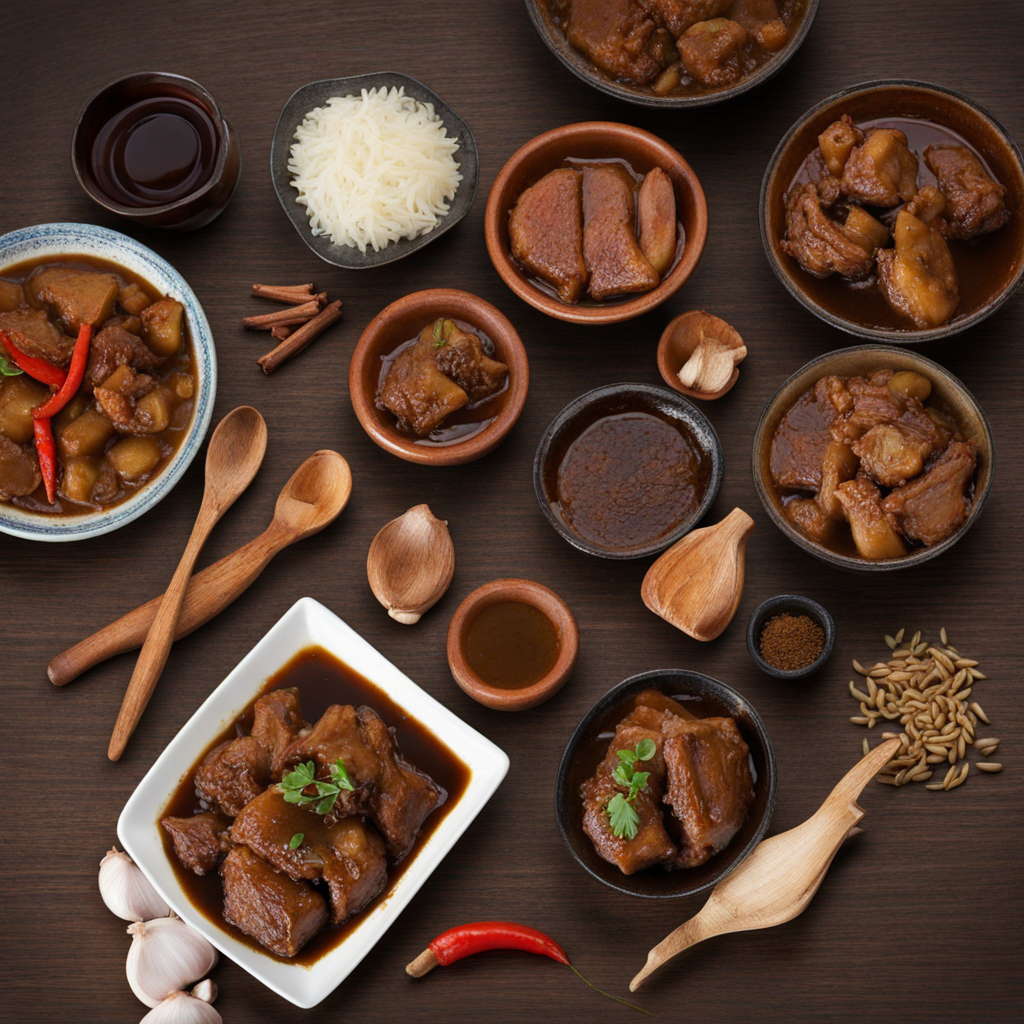Pochero
Pochero is a hearty Filipino stew that beautifully reflects the country's rich culinary heritage. It typically features a blend of tender meats, often including pork or beef, simmered to perfection with a medley of vegetables such as potatoes, carrots, and cabbage. The dish is known for its comforting flavors, often enhanced by a savory broth made from a combination of water, spices, and sometimes a hint of tomato. The inclusion of plantains or saba bananas adds a subtle sweetness that balances the savory elements, making each bite a delightful experience. One of the remarkable aspects of Pochero is its versatility. Regional variations abound, with some versions incorporating chickpeas or chorizo for an added depth of flavor. The cooking method allows the ingredients to meld together, creating a rich, umami-laden broth that is perfect for spooning over a bowl of rice. The dish is often garnished with a drizzle of soy sauce or a squeeze of calamansi, giving it a zesty kick that elevates the overall taste profile. Pochero is more than just a meal; it is a celebration of communal dining, often enjoyed during family gatherings and special occasions. Its warming, filling nature makes it a favorite comfort food among Filipinos, evoking nostalgia and a sense of home. Whether you're savoring a steaming bowl on a rainy day or sharing it with loved ones, Pochero offers a unique and satisfying culinary experience that invites you to discover the heart of Filipino cuisine.
How It Became This Dish
Pochero: A Culinary Journey Through Filipino Heritage Pochero, a hearty stew that warms the soul, is a beloved dish in the Philippines, showcasing the rich tapestry of the nation's culinary heritage. With roots that can be traced back to Spanish colonial influence, pochero embodies the melding of cultures that characterize Filipino cuisine. The dish has evolved over centuries, acquiring regional interpretations and variations, each telling a unique story of the communities that cherish it. Origins and Historical Context The origins of pochero can be traced back to the Spanish "puchero," a term that generally refers to a type of stew or pot dish. During the Spanish colonial period in the Philippines (1565-1898), the culinary landscape began to shift dramatically as Spanish settlers introduced new ingredients and cooking techniques to the archipelago. The Spanish puchero, made with meat, vegetables, and legumes, found a new home in Filipino kitchens, adapting to the local palate and available resources. The Spanish brought with them various ingredients that were not native to the Philippines, such as potatoes, tomatoes, and various spices. The integration of these ingredients with indigenous foods created a culinary fusion that is the hallmark of many Filipino dishes. Pochero is a prime example of this fusion, as it incorporates local vegetables like saba bananas, leafy greens, and even regional sausages, depending on the local variation. Cultural Significance Pochero is more than just a meal; it is a symbol of unity and family. Traditionally, it is served during gatherings, celebrations, and special occasions, embodying the Filipino value of "bayanihan" – the spirit of communal unity and cooperation. The act of sharing a large pot of pochero reflects the warmth of Filipino hospitality, where food is a means to bring people together. In the context of Filipino festivals and holidays, pochero often takes center stage. During Christmas celebrations, for example, families whip up large batches to share with neighbors and friends, reinforcing social bonds. Its presence in the dining table is not merely for sustenance but as a centerpiece that fosters connection and community. Regional Variations As with many traditional dishes, pochero has seen a plethora of regional variations across the Philippines, each rooted in local ingredients and culinary traditions. In Luzon, particularly in the Ilocos region, a variant known as "Pochero Ilocano" features local sausages called "longganisa," along with vegetables like cabbage, carrots, and potatoes. The use of the locally produced longganisa adds a unique flavor profile that distinguishes it from other versions. In the Visayas, particularly in Cebu, pochero is often prepared with beef shank, adding richness to the broth. This version may also include local vegetables like "sibuyas" (onions) and "kamatis" (tomatoes), giving it a tangy edge. Moreover, some versions incorporate a touch of vinegar, highlighting the region's penchant for sour flavors. The southern region of Mindanao showcases its own interpretation, often featuring chicken or pork and a medley of vegetables indigenous to the area. The diversity of ingredients reflects the agricultural abundance of the Philippines and the adaptability of Filipino cooks to create dishes that resonate with local tastes. Evolution Over Time Over the years, pochero has evolved from its Spanish roots into a distinctly Filipino culinary icon. The post-colonial period saw the dish being adapted further, particularly during times of economic hardship when resourcefulness became a necessity. As ingredients became scarce, families learned to make the most of what they had, leading to an even broader range of variations. The advent of globalization also played a role in the evolution of pochero. With the increasing influence of international cuisine and the availability of diverse ingredients, modern interpretations of pochero have emerged. Gourmet versions are now being served in upscale restaurants, where chefs experiment with flavors and presentation, often elevating the dish to fine dining status. These modern renditions may include gourmet meats, artisanal sausages, and an array of exotic vegetables, reflecting a fusion of traditional and contemporary culinary practices. Contemporary Significance Today, pochero continues to hold a special place in Filipino hearts. It is not only a staple in households but also a popular offering in restaurants, showcasing the dish's versatility and enduring appeal. Social media has further amplified its reach, as food enthusiasts share their own interpretations and family recipes, creating a vibrant online community around Filipino cuisine. Moreover, the resurgence of interest in heritage cooking and farm-to-table movements has brought renewed attention to traditional dishes like pochero. Chefs and home cooks alike are rediscovering the value of using local, seasonal ingredients, emphasizing sustainability and community support. This trend has breathed new life into the dish, ensuring that it remains relevant to contemporary palates while honoring its historical roots. Conclusion Pochero, with its rich history and cultural significance, is more than just a dish—it's a narrative of the Filipino spirit, resilience, and adaptability. From its Spanish origins to its status as a cherished family meal, pochero embodies a fusion of flavors and traditions that reflects the country's diverse heritage. As it continues to evolve, pochero serves as a delicious reminder of the Philippines' culinary journey, uniting generations and communities through the simple act of sharing a meal. Whether enjoyed in a humble home or an upscale restaurant, pochero is a testament to the enduring legacy of Filipino cuisine, inviting all to partake in its warm embrace.
You may like
Discover local flavors from Philippines


